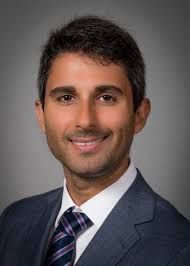Study Shows New Schizophrenia Relapse Predictors
Tardive dyskinesia at treatment onset was the strongest predictor of schizophrenia relapse.
Jose M. Rubio, MD

The majority of schizophrenia patients have relapses, increasing the risk of morbidity and mortality. One of the major reasons for relapses is non-adherence to antipsychotic maintenance therapies, affecting more than half of the individuals with schizophrenia-spectrum disorders.
Psychosis relapse is often confounded by unnoticed treatment interruption and research of relapse during confirmed antipsychotic exposure has basic clinical and neurobiological implications.
However, data showing this connection is scarce.
A team, led by Jose M. Rubio, MD, Department of Psychiatry, The Zucker Hillside Hospital, Northwell Health, generated reliable estimates on the incidence and predictors of schizophrenia relapse during assured antipsychotic treatment.
In the systematic review and individual participant data meta-analysis, the investigators examined clinical trials of long-acting injectable antipsychotics (LAIs) for psychosis relapse-preventing, following IPD-PRISMA guidelines.
The investigators identified datasets by searching relevant repositories from inception to August 2019. Each LAI group was reanalyzed as a separate cohort to further identify subcohorts of individuals with and without prospectively determined symptom remission.
The researchers generated summary incidence rate of relapse, incidence rate ratios (IRRs) of relapse between individuals with and without PSR, hazard ratios (HRs) of covariates on risk of relapse, and standardized mean difference (SMDs) in changes in overall functioning associated with relapse by pooling results from the harmonized reanalysis of each study.
The team found a total of 19 treatment cohorts involving 5130 individuals with 3959.53 observed participant years. Of this patient population, 2938 had PSR and 2192 individuals did not have PSR.
The pooled incidence of relapse was 22.97 per 100 participant years (14.76 per 100 participant-years for the PSR subcohort, 31.51 per 100 participant-years for the non-PSR subcohort), with an IRR of 0.19 (95% CI, 0.07-0.54).
Relapse was also linked with functional decline (overall SMD, −0.76; 95% CI, −1.14 to −0.37; PSR SMD −0.52; 95% CI, −0.80 to −0.21; non-PSR SMD, −0.72; 95% CI, −1.18 to −0.26).
The strongest predictor of relapse was tardive dyskinesia at treatment onset (HR, 2.39; 95% CI, 1.05-5.42).
“Despite the established efficacy of antipsychotics in preventing relapse, these data indicate that these drugs might not prevent subsequent exacerbations for a proportion of individuals whose illness is stabilized on continuous antipsychotic treatment,” the authors wrote. “Tardive dyskinesia in particular might have pathophysiological implications for relapse.”
Recently, the Donald and Barbara Zucker School of Medicine at Hofstra/Northwell compared long-acting formulation of antipsychotic medication to reduce the risk of hospitalization in early-phase schizophrenia with usual care.
For the time to first hospitalization, the hazard ratio was 0.56 (95% CI, 0.34- 0.92; P = 0.02), which favored the aripiprazole once monthly treatment group.
The number needed to treat to prevent at least 1 additional hospitalization was 7 individuals treated with aripiprazole once monthly compared with clinician’s choice.
The study, “Psychosis relapse during treatment with long-acting injectable antipsychotics in individuals with schizophrenia-spectrum disorders: an individual participant data meta-analysis,” was published online in The Lancet Psychiatry.